The Peter Green tribute concert: 10 guitar highlights from David Gilmour, Kirk Hammett, Billy Gibbons, Pete Townshend and more
We went to Mick Fleetwood & Friends’ celebration of Peter Green's music and this is what we learned
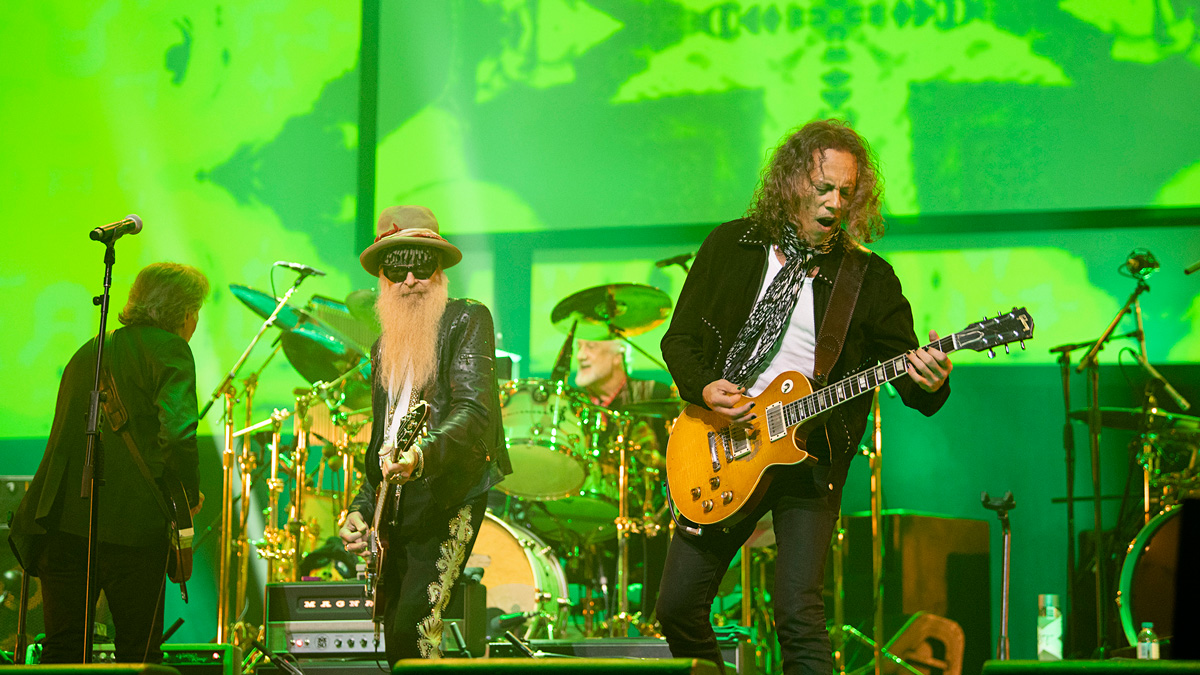
There are two Fleetwood Macs. There’s the Fleetwood Mac of Rumours, the fifth best-selling original album of all time. The Fleetwood Mac of Go Your Own Way, of The Chain and Big Love, the Fleetwood Mac whose 2018/2019 tour grossed over $100 million (and that was just the North American leg).
And then there’s The Real Fleetwood Mac. You know: the proper one, the legendary 60s band that featured Peter Green and influenced just about every guitarist in the world for decades to come.
Between March 1968 and May 1970, Green’s Fleetwood Mac released six UK top 40 singles that redefined ‘blues music'. There was Black Magic Woman and Need Your Love So Bad, two songs that showcased Peter Green’s clean, honeyed tone and delicate touch – the latter a cover of a blues song from 1955 first recorded by Little Willie John, the former a Peter Green original whose Latin-influenced rhythms would be taken to their logical conclusion by Santana.
Then there was Albatross, a gorgeous, yearning instrumental that sounded like, I dunno, a dream of Hawaii or like a surf guitar record played at the wrong speed and yet, still – somehow – went to number 1 in the UK.
It was ‘post-rock’ several decades before anyone even thought of the term.
Then there was Man Of The World, which sounds a bit like like the blues might if it was played by heart-broken Martians, Oh Well - which pretty much lit the path for Led Zeppelin – and the last song he ever wrote for the band, The Green Manalishi (With The Two-Prong Crown).
That one – a nightmarish rocker about the perils of money – was later retooled by Judas Priest and helped define the New Wave of British Heavy Metal. (The other Fleetwood Mac? The only thing they invented was Desmond Child.)
So it’s no surprise that the great and the good gathered in London for Mick Fleetwood & Friends’ - a celebration of Peter Green's music. Here’s everything every guitar player needs to know.
1. The house band were next level
Rick Vito (guitarist for Fleetwood Mac 1987-91 and longterm Bob Seger sideman). Jonny “I-shoulda-been-John-Mayer” Lang. Dave Bronze - who looks like Clapton’s bass-playing brother – and his bandmate Andy Fairweather Low (who in turn looks like Philip Larkin if he’d led a razor gang).
There’s Ricky Peterson (Fleetwood Mac, Prince, etc) on keyboards ands on drums there’s Zak Starkey (Ringo’s boy/The Who) and Mick Fleetwood himself. Andy Fairweather Low introduces Fleetwood as “the tallest drummer I’ve played with, the king of the shuffle – he is Mr Wonderful!”
These are guys for whom the words “seasoned pros” were invented. The moment when Vito steps in front of the mic and sings to the room unaided is electrifying, while Lang’s wrestles with Need Your Love So Bad were a joy to watch.
2. Billy Gibbons is better when he’s not with ZZ Top
Seriously. We saw ZZ in London last year, going through the motions for their 50th anniversary, bored with the hits. But every time we see Gibbons in a situation like this (eg, Gibson’s NAMM Jams), he oozes charisma and cool. His guitar is slung lower than everyone else and his tone is closer to the dirt too.
All the latest guitar news, interviews, lessons, reviews, deals and more, direct to your inbox!
He does Doctor Brown from the Mr Wonderful album. With two drummers and four guitar players, it’s transformed from the rinky-dink shuffle to a marauding blooze. Steven Tyler comes on for All Your Love and gestures for everyone to “Get the fuck up!” They do, but then sit straight back down again. This audience is not as young as it used to be and it’s far too early for that.
3. John Mayall knew how to pick a band
Four members of Fleetwood Mac – Peter Green, John McVie, Mick Fleetwood and Rick Vito – were in John Mayall’s Bluesbreakers. It’s disrespectful to even think this and I apologise in advance, but after Tyler, Mayall is a little bit like the Head Teacher of The Blues. His delivery is formal and stiff in comparison, although Gibbons’ solo takes it up a notch and Mayall responds in kind.
4. Noel Gallagher’s still got it
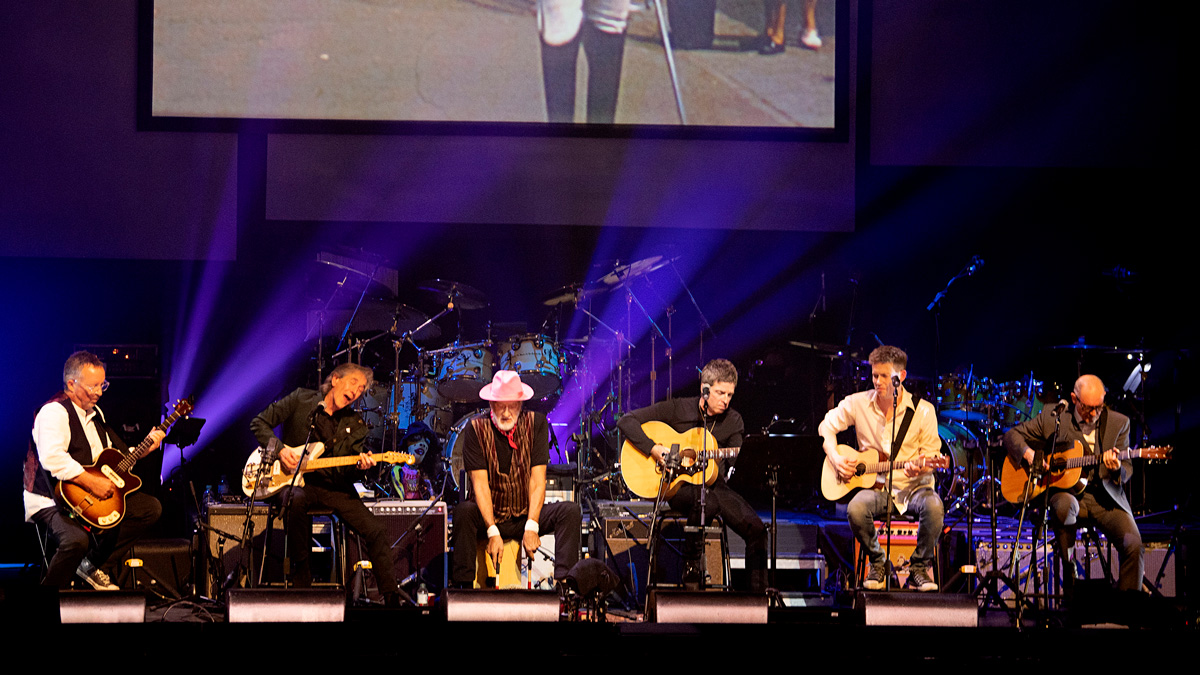
With stools set up front of stage, the band gather for what Fleetwood calls “an acoustic huddle“ with Noel Gallagher. “I know what some of you are thinking,“ says Noel. “‘He ain’t got the fucking blues’. Well let’s find out – you might, after this.”
They take on Sandy Mary, previously an obscure Peter Green rock ’n’ roll number, it is unplugged and transformed. Noel has never been the greatest singer but the arrangement suits him: he’s gentle with it and the result feels honest and not as hokey as some of the performers that proceeded him.
5. Pete Townshend is a force of nature
The Who guitarist starts with an apology. He didn’t really know Peter Green he says. He tried working with him and it didn’t work out. He saw him as a sad figure. And he’s not even going to play a Green song. Instead, he plays Station Man from Kiln House, the first Fleetwood Mac album made after Green’s breakdown/departure.
But first, says Pete, “I want to show you something.” He plays some unmistakably Townshend-y chords. “That’s Won’t Get Fooled Again,” he says. “Now listen to Station Man…” It features the same chords. It sounds great. Won't Get Fooled Again came out a year after Kiln House.
Townshend plays like only Townshend can: there is no attempt at Greeny-style tone and precision: there is windmilling and wanton destruction. (How can latest Mac-recruit Neil Finn hope to follow that? Luckily for him, he is armed with something extraordinary – Man Of The World.)
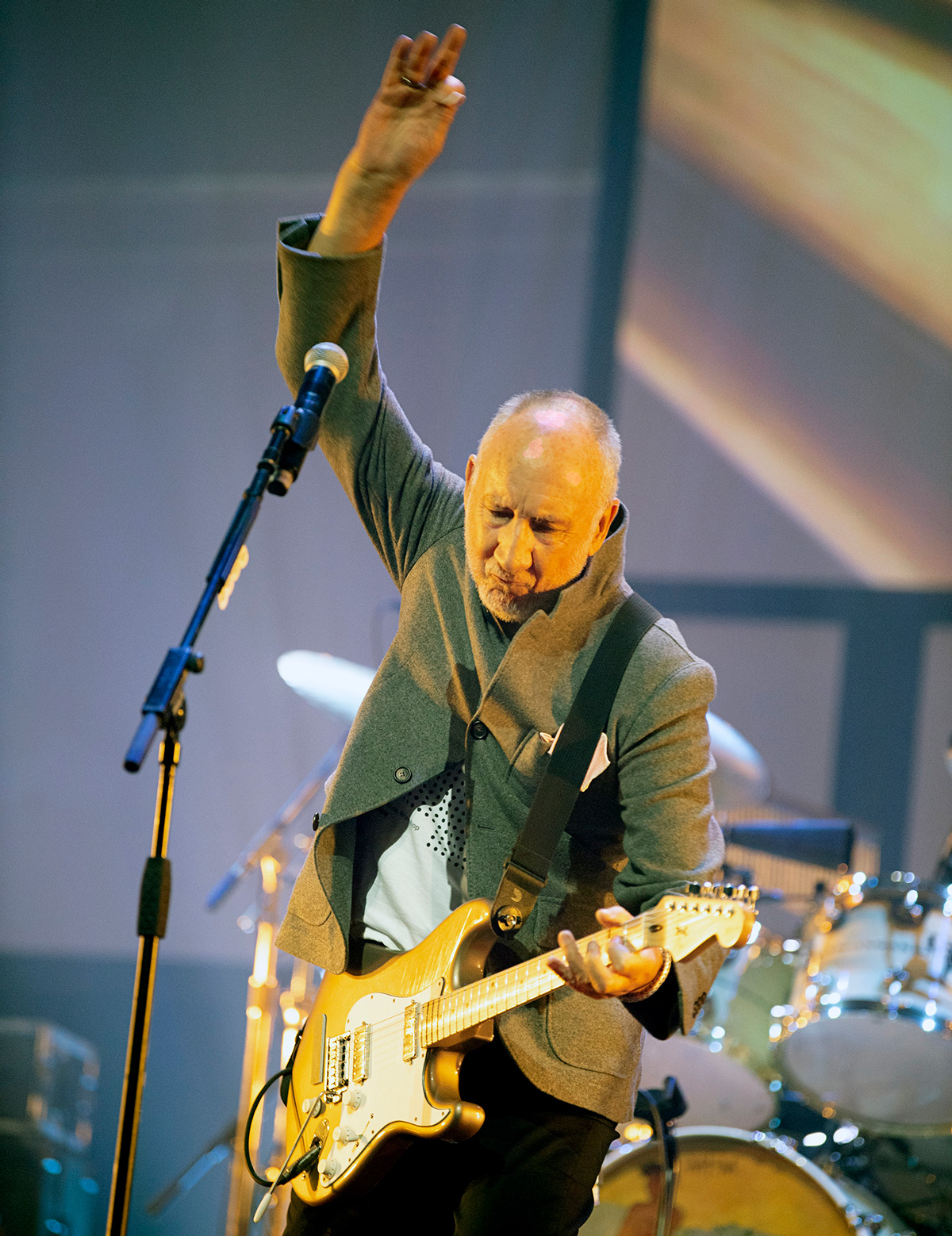
6. Oh Well is a game of two (extraordinary) halves
Part 1: Billy Gibbons and Steven Tyler duet, trading lines on one of the most satisfying blues-rock classics of the 60s. Two drummers, four guitars, two singers. It has balls.
When it explodes at the end and Gibbons and Tyler leave the stage, the hum of an amp swells and there, without fanfare, is David Gilmour and a black Strat playing Oh Well Pt. 2 and making it sound like it was the cornerstone of Floyd’s back catalogue. He is Gilmouresque, let’s say, and it fits perfectly: both Green and Gilmour aiming for economy, wringing the most out of clean, sweet tones and simple melodies.
At the end, Fleetwood says: “That has never ever, ever been played onstage before, not even back in the day.”
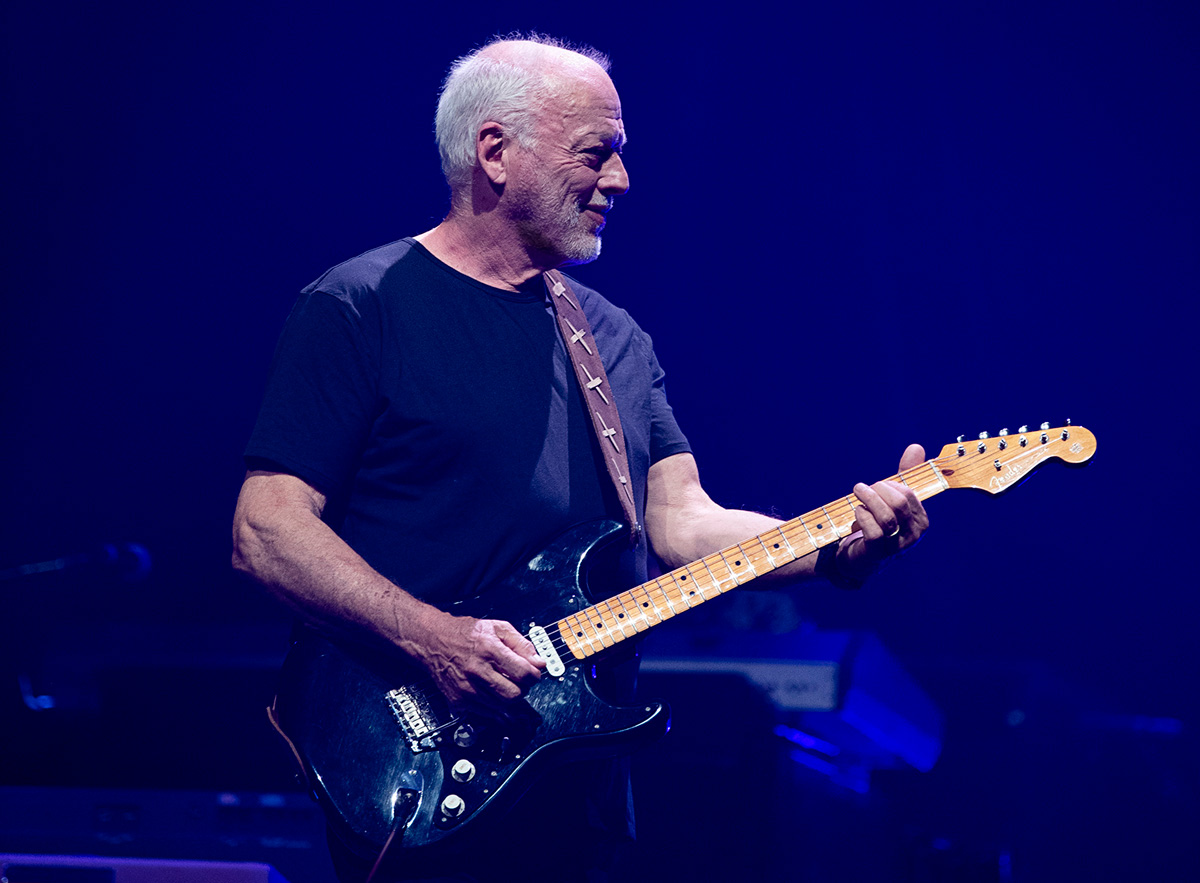
7. Jeremy Spencer is a lost hero of blues guitar playing
In 1971, halfway through a US tour, and allegedly recovering from a heady mescaline trip, Jeremy Spencer left the band’s hotel room to pop out to a bookshop – and never came back. He had joined a religious group called The Children of God and gave up the rock ’n’ roll life.
Over the years, Spencer has made some music, but his appearance tonight, threading delicate slide licks through Elmore James’s The Sky Is Crying and unleashing an enormous voice to match the drama, makes you wonder what might have been. It’s the first time he’s played with Fleetwood in 49 years.
9. Tonight ‘Greeny’ is as big a star as Kirk Hammett
Metallica’s Kirk Hammett is the current owner of ‘Greeny’, the 1959 Les Paul Standard previously owned by Green and Gary Moore. When Fleetwood announces Hammett and that he has Green’s guitar there is a noticeable “Ooooh” in the room. It’s for the guitar.
Hammett slashes the brash chords of The Green Manilishi alongside Gibbons, Vito, Lang and Fairweather Low and it sounds like the most exciting bit of living history you ever heard.
10. When you influenced The Beatles, you know you did something right
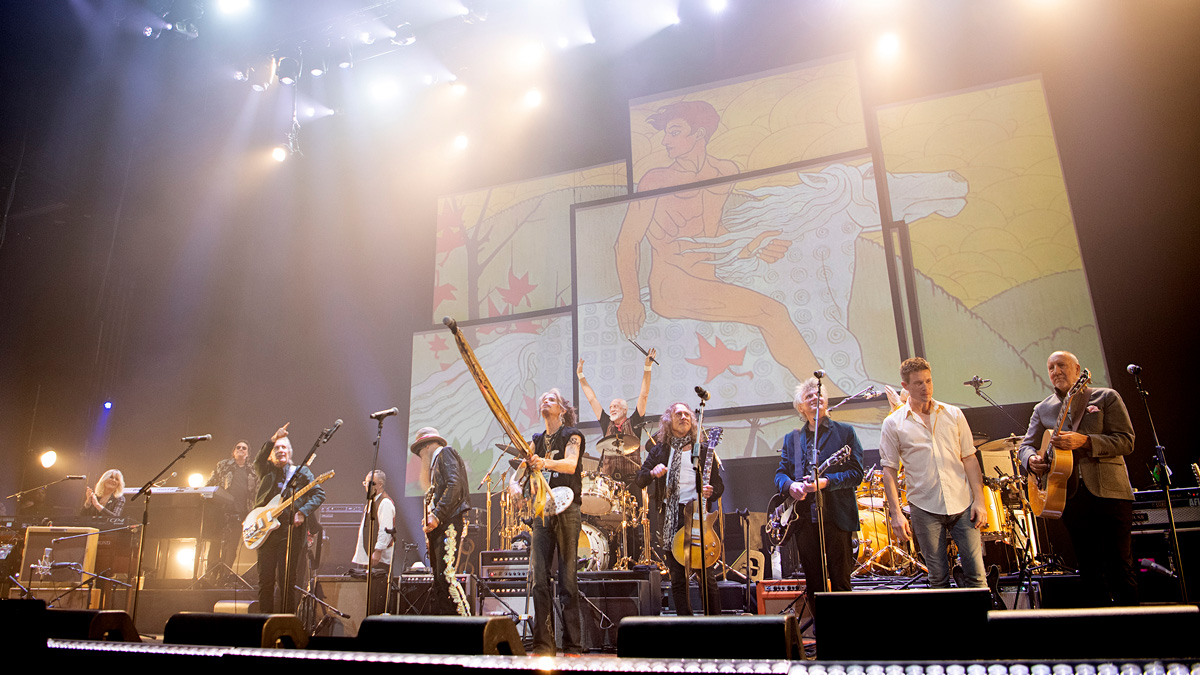
There was an all-star finale, of course, with everyone onstage for a romp through Shake Your Moneymaker, John Mayall scatting, Tyler on harmonica, solos galore. Finally the audience were out of their seats. Chins jutted, shoulders rolled, eyes glistened.
But before all that, the night had already peaked. Mick Fleetwood told a story about travelling back in the van late one night from Glasgow or Newcastle, and listening to the radio to keep himself awake. The Beatles were on the radio talking about their latest album, Abbey Road, and going through it track by track.
Sun King? they said, that was their attempt at “doing a Fleetwood Mac”. Fleetwood makes his kit sound like timpani and David Gilmour sits behind a lap steel and makes the sounds of the spheres. It’s not perfect. But it is lovely.
And, somewhere in England, oblivious to all this, Peter Green finished his tea, folded away his specs, and took himself off to bed. He can sleep soundly.
The Mick Fleetwood & Friends Celebrate The Music Of Peter Green And The Early Years Of Fleetwood Mac box set will be released on 19 October 2020, and is available to preorder now from Townsend Music. The concert will be shown in cinemas in the UK in June and tickets are available to book now.

Scott is the Content Director of Music at Future plc, responsible for the editorial strategy of online and print brands like Guitar World, Guitar Player, Total Guitar, Louder, Classic Rock, Metal Hammer, Prog, Guitarist and more. He was Editor in Chief of Classic Rock for 10 years and, before that, the Editor of Total Guitar and Bassist magazines. Scott regularly appeared on Classic Rock’s podcast, The 20 Million Club, and was the writer/researcher on 2017’s Mick Ronson documentary Beside Bowie.

